Best Dart Programming Books to Buy in December 2025

Flutter Design Patterns and Best Practices: Build scalable, maintainable, and production-ready apps using effective architectural principles


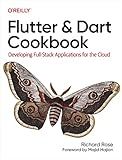
Flutter and Dart Cookbook: Developing Full-Stack Applications for the Cloud


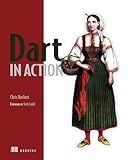
Dart in Action


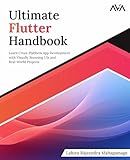
Ultimate Flutter Handbook: Learn Cross-Platform App Development with Visually Stunning UIs and Real-World Projects (English Edition)


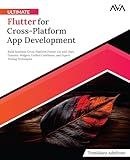
Ultimate Flutter for Cross-Platform App Development: Build Seamless Cross-Platform Flutter UIs with Dart, Dynamic Widgets, Unified Codebases, and ... App Developer — Unified Expert Path)


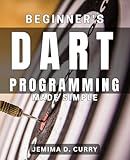
Beginner's Dart Programming Made Simple: #ERROR!


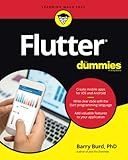
Flutter For Dummies


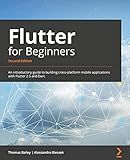
Flutter for Beginners: An introductory guide to building cross-platform mobile applications with Flutter 2.5 and Dart


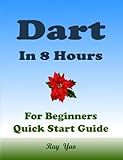
Dart Programming, In 8 Hours, For Beginners, Learn Coding Fast: Dart Programming Language, Crash Course Tutorial, Quick Start Guide & Exercises


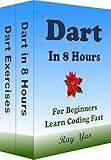
Dart Programming, In 8 Hours, For Beginners, Learn Coding Fast: Dart Language Crash Course Textbook & Exercises (Cookbooks in 8 Hours 3)


To compare dates in Dart, you can use the DateTime class which provides various methods and properties for working with dates and times.
- Creating Date Objects: To compare dates, you need to first create DateTime objects representing the dates you want to compare. You can create a DateTime object using the following constructors: a. Using the named constructor DateTime.now() to get the current date and time. b. Using the named constructor DateTime(year, month, day, [hour, minute, second, millisecond, microsecond]) to create a specific date and time. Example: DateTime currentDate = DateTime.now(); DateTime specificDate = DateTime(2022, 12, 31);
- Comparing Dates: Once you have the DateTime objects, you can compare them using the following comparison operators: a. isBefore(other) returns true if the date is before the other date. b. isAfter(other) returns true if the date is after the other date. c. isAtSameMomentAs(other) returns true if the date is at the same moment as the other date. Example: bool isCurrentDateBeforeSpecificDate = currentDate.isBefore(specificDate); bool isCurrentDateAfterSpecificDate = currentDate.isAfter(specificDate); bool areDatesEqual = currentDate.isAtSameMomentAs(specificDate); Note: The comparison is based on both date and time values.
- Comparing Dates Only (excluding time): If you want to compare dates only, without considering the time portion, you can extract the date part using the date property of the DateTime object. Example: bool isCurrentDateBeforeSpecificDate = currentDate.date.isBefore(specificDate.date); Note: The date property returns a new DateTime object with the same year, month, and day but with the time portion set to midnight (00:00:00).
Remember, Dart's DateTime class provides additional methods like difference(other) to calculate the duration between two dates and many more, which you can explore for more advanced date operations.
How do you format a DateTime object into a specific string representation in Dart?
In Dart, you can format a DateTime object into a specific string representation using the intl package. Here's an example of formatting a DateTime object into a specific format:
- First, add the intl package to the pubspec.yaml file:
dependencies: intl: ^0.17.0
- Import the required packages:
import 'package:intl/intl.dart';
- Format the DateTime object into the desired string representation:
DateTime now = DateTime.now(); String formattedDate = DateFormat('yyyy-MM-dd HH:mm:ss').format(now); print(formattedDate);
In this example, DateFormat is used to define the desired format using a pattern. The pattern 'yyyy-MM-dd HH:mm:ss' represents the year, month, day, hour, minute, and second.
You can replace the provided pattern with your own pattern based on your desired string representation. You can find more available patterns in the DateFormat class documentation: DateFormat class | intl package
Are there any libraries or packages available in Dart for advanced date comparison and manipulation?
Yes, there are libraries and packages available in Dart for advanced date comparison and manipulation. Some of the popular ones are:
- intl: Provides internationalization and localization support, including date formatting and parsing.
- date_format: Allows you to format and parse dates using the standard date format strings.
- date_util: Provides utilities for working with dates, such as calculating the difference between two dates.
- timeago: Helps in formatting dates as relative time ("2 hours ago", "yesterday", etc.).
- jiffy: Offers advanced date manipulation, parsing, and formatting options.
- chronology: Provides date and time manipulation, conversion, and comparison features.
- persian_date: Allows manipulation and formatting of Persian (Jalali) dates.
These packages can be easily installed and added to your Dart project using the package manager pub. For more information on how to use these packages and to explore others, you can visit the official Dart package repository at pub.dev.
Can you compare only the date portion of DateTime objects in Dart?
Yes, you can compare only the date portion of DateTime objects in Dart by using the .isAtSameMomentAs() method along with the .toLocal() method to convert the DateTime objects to the local time zone.
Here's an example:
DateTime date1 = DateTime(2022, 10, 10, 12, 30, 0); // DateTime object 1 DateTime date2 = DateTime(2022, 10, 10, 15, 45, 0); // DateTime object 2
bool isSameDate = date1.toLocal().isAtSameMomentAs(date2.toLocal());
print(isSameDate); // true
In the example above, .toLocal() is used to convert both DateTime objects to the local time zone before comparing them. The .isAtSameMomentAs() method is then used to compare the date portion of the DateTime objects, ignoring the time portion. If the date portion is the same, it returns true, otherwise false.
How do you get the difference in minutes between two DateTime objects in Dart?
To get the difference in minutes between two DateTime objects in Dart, you can subtract one DateTime from another and use the .inMinutes property. Here is an example:
import 'package:intl/intl.dart';
void main() { DateTime dateTime1 = DateTime.now(); DateTime dateTime2 = DateTime.now().add(Duration(hours: 1));
int differenceInMinutes = dateTime2.difference(dateTime1).inMinutes;
print('Difference in minutes: $differenceInMinutes'); }
In the example above, we have two DateTime objects, dateTime1 and dateTime2. We calculate the difference between them using the difference() method, which returns a Duration object. Then, we can use the .inMinutes property of the Duration object to get the difference in minutes. Finally, we print the result.
Make sure to import the intl package to use the DateTime class and related functions and classes.
How do you check if one DateTime object is after another in Dart?
In Dart, you can check if one DateTime object is after another using the isAfter() method.
Here's an example:
void main() { DateTime dateTime1 = DateTime(2022, 1, 1); DateTime dateTime2 = DateTime(2021, 12, 31);
if (dateTime1.isAfter(dateTime2)) { print('dateTime1 is after dateTime2'); } else { print('dateTime1 is not after dateTime2'); } }
In this example, isAfter() method is used to compare dateTime1 with dateTime2. If dateTime1 comes after dateTime2, it will print 'dateTime1 is after dateTime2'. Otherwise, it will print 'dateTime1 is not after dateTime2'.
